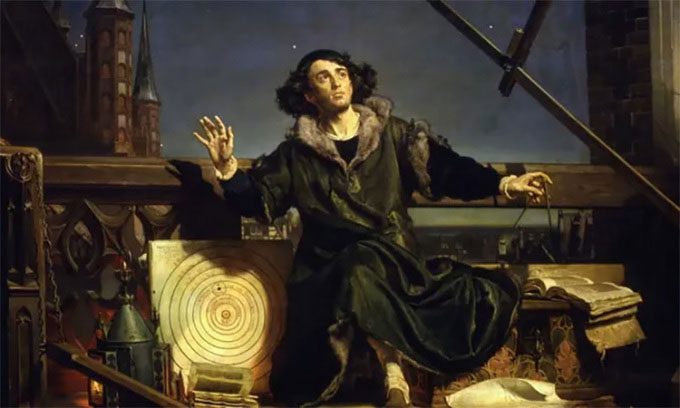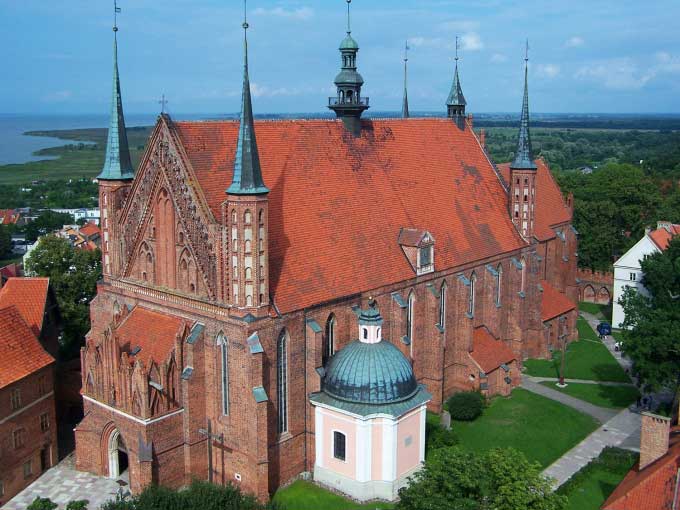For centuries, experts were unable to identify the remains of Nicholas Copernicus until strands of hair were found tucked inside a book.
Nicholas Copernicus was a renowned astronomer of the Renaissance. Five centuries ago, he proposed that the Earth revolves around the Sun, rather than the other way around. In addition to being an astronomer, he was also a mathematician, engineer, author, economic theorist, and physician. However, the location of his grave remained a mystery for many centuries.

Portrait of astronomer Nicholas Copernicus. (Photo: Jan Matejko/Wikimedia).
The Life of Nicholas Copernicus
Nicholas Copernicus was born in Torun, Poland, in 1473. He was the youngest of four children in a local merchant’s family. After Copernicus’s father passed away, an uncle took charge of his education. He studied at the University of Krakow from 1491 to 1494, and then at universities in Italy, including Bologna, Padua, and Ferrara.
After studying medicine, canon law, astronomy, and astrology, Copernicus returned to his homeland in 1503. He subsequently worked for his uncle, Lucas Watzenrode the Younger, a bishop. Copernicus served as both a physician and continued his mathematical studies. At that time, both astronomy and music were considered branches of mathematics. During this period, he developed two influential economic theories: the quantity theory of money in 1517 and Gresham’s Law in 1519.
One of Copernicus’s most significant contributions to science is his revolutionary model of the universe. Contrary to the prevailing Ptolemaic model of the time, which stated that the Earth was stationary and the center of the universe, Copernicus argued that the Earth and other planets revolve around the Sun. He even compared the sizes of planetary orbits by expressing them in relation to the distance between the Sun and the Earth.
His masterpiece, the book De Revolutionibus Orbium Coelestium (On the Revolutions of the Celestial Spheres), was published just before his death in 1543. This work laid the groundwork for significant changes in humanity’s understanding of the cosmos, paving the way for later astronomers like Galileo Galilei.
The Centuries-Long Quest for His Grave

Frombork Cathedral, where Copernicus was buried. (Photo: Lestat/Wikimedia).
After he passed away in Frombork, Poland, in 1543, Copernicus was buried at the local church. Frombork Cathedral is the resting place for more than 100 individuals, most of whom are in unmarked graves.
Numerous attempts to locate Copernicus’s remains were made in the 16th and 17th centuries but were unsuccessful. Another failed attempt was made by French Emperor Napoleon after the Battle of Eylau in 1807. Napoleon held great respect for Copernicus as a scholar, mathematician, and astronomer.
In 2005, a team of Polish archaeologists began searching for Copernicus’s grave. They followed the theory of historian Jerzy Sikorski, who claimed that Copernicus was buried near the altar he managed while serving as a priest there. This was the St. Wenceslaus altar, now known as the Holy Cross altar.
The scientists discovered 13 skeletons near this altar, including the incomplete skeleton of a man aged 60 to 70. This particular skeleton was identified as the one most closely matching Copernicus. The skull of the skeleton was later used as a basis for reconstructing the face.
In addition to morphology studies, DNA analysis is often used to identify ancient remains. In the case of the aforementioned incomplete skeleton, experts were able to identify genes since the teeth were in well-preserved condition. However, the challenge lay in finding suitable reference material: experts did not have the remains of any relatives of Copernicus.
Strange Discovery Aids Identification
In 2006, a new source of DNA reference material unexpectedly emerged. Experts discovered several strands of hair between the pages of an astronomical book that Copernicus had used for many years. The book is currently owned by the Gustavianum Museum at Uppsala University, Sweden.
The strands of hair likely belonged to Copernicus, the primary user of the book. Therefore, they were considered potential reference material for comparing genes with the teeth and bones found in the grave. The comparison process indicated that both mitochondrial DNA from the teeth and bone sample matched the mitochondrial DNA of the hair, suggesting that the remains likely do indeed belong to Nicholas Copernicus.
This multidisciplinary effort, involving archaeological excavation, morphological research, and advanced DNA analysis, yielded a convincing result. This remarkable finding not only clarified the resting place of one of the most influential figures in the history of science but also demonstrated the tremendous impact of modern scientific methods in validating historical data.


















































